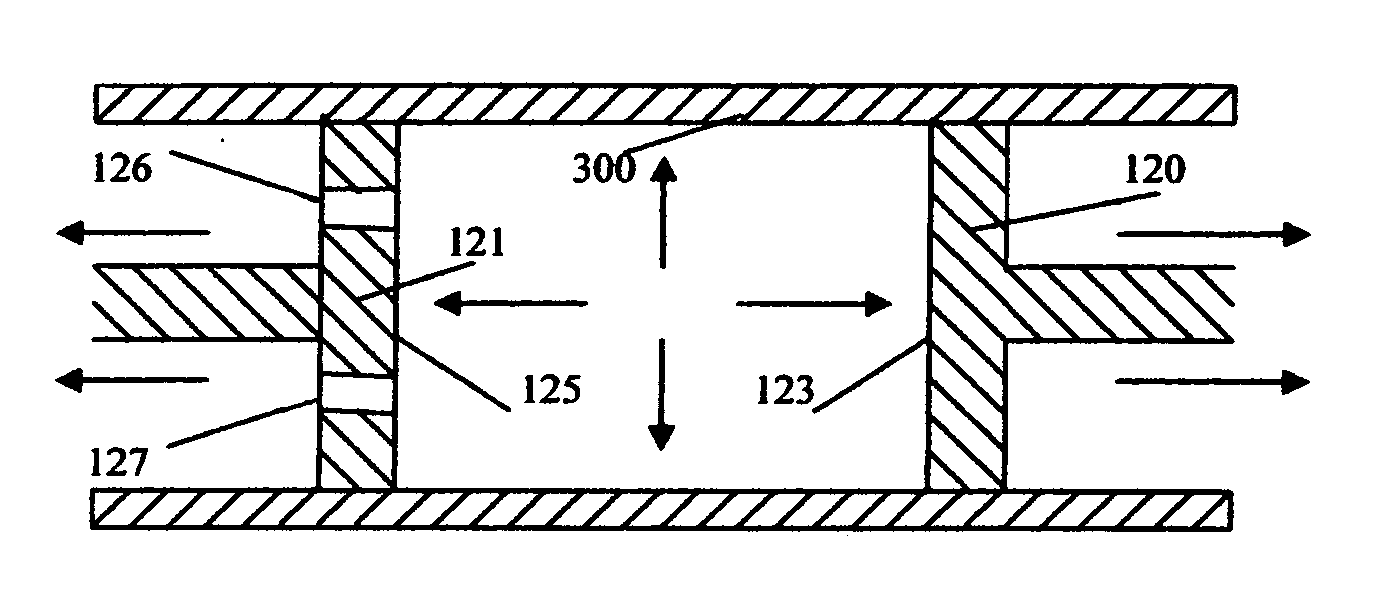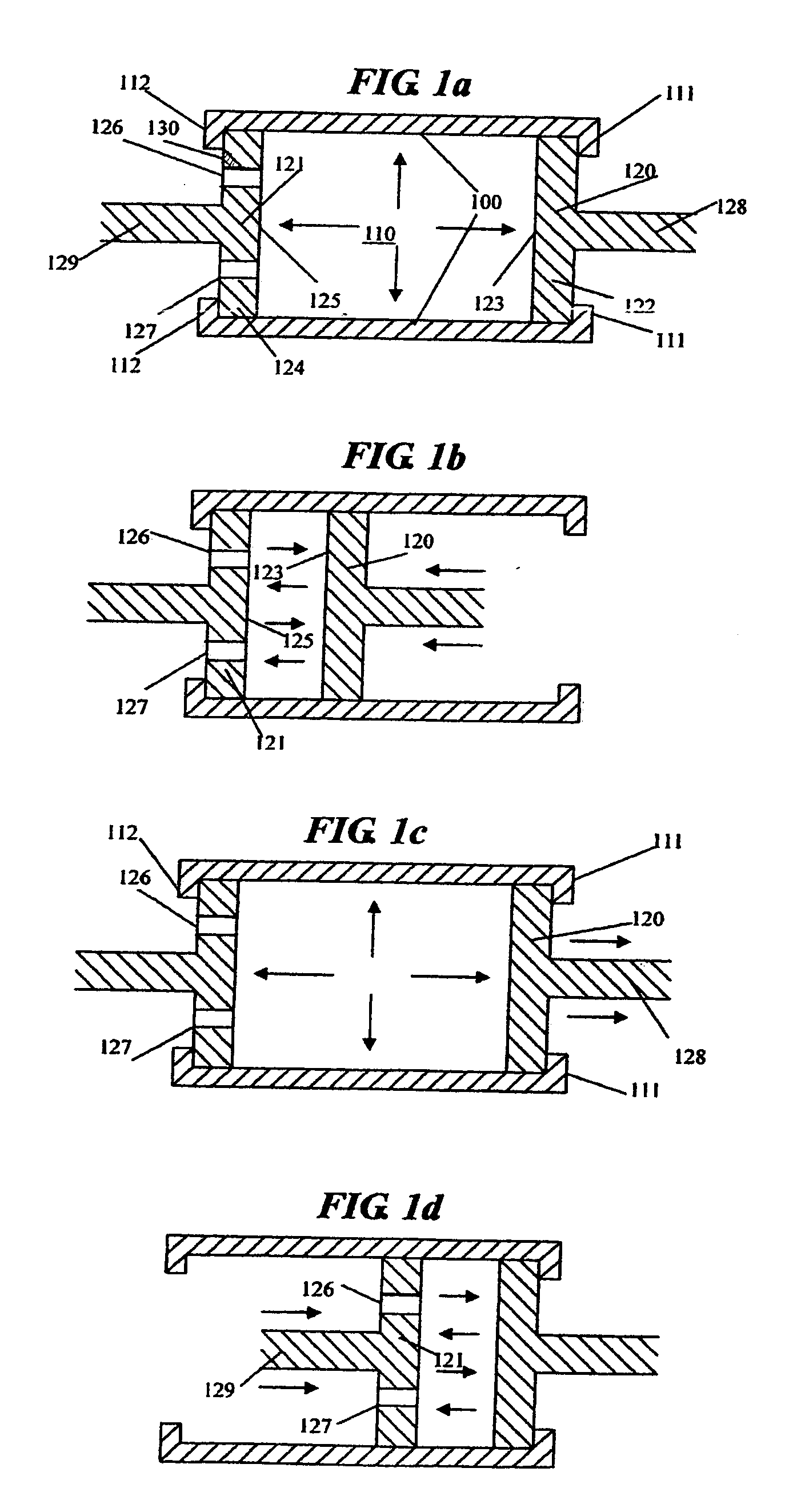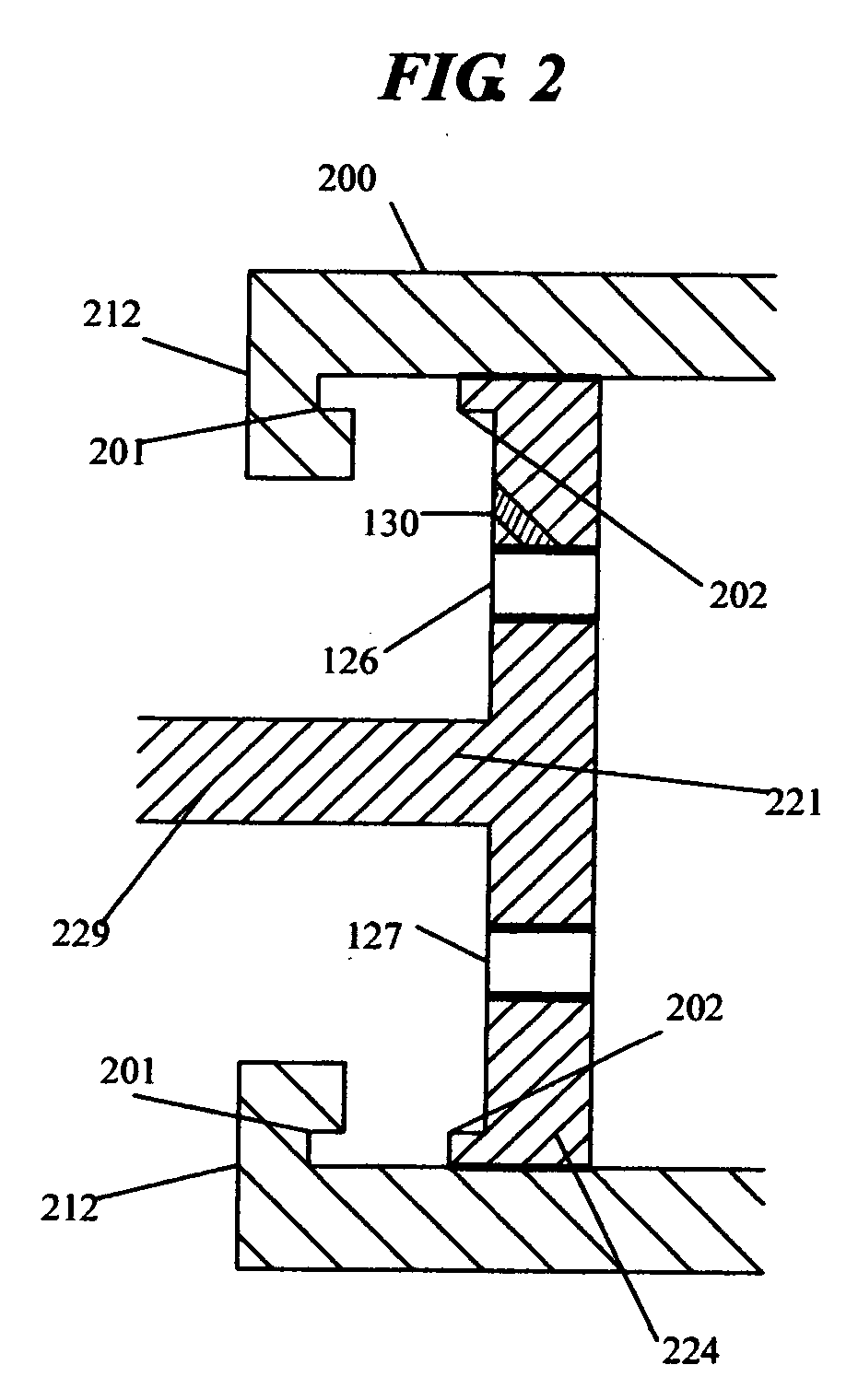Opposed Double Piston Internal Combustion Engine
- Summary
- Abstract
- Description
- Claims
- Application Information
AI Technical Summary
Benefits of technology
Problems solved by technology
Method used
Image
Examples
second embodiment
[0039] Referring to FIG. 3a-b, it is another example to avoid damages from direct impacts to the pistons and cylinder and also engine operation. Cylinder (100) has been constructed without any stopping guards and cylinder head to have engine operation different from FIG. 1a-b. An engine combustion of gaseous fuel is taking place in FIG. 3a, and forcing two pistons (120, 121) going away by the power of combustion at the same manner. When two pistons move away and reach a required position for transmission of power, exhaustion outlet (127) is open for exhaustion of emission bringing the pistons loss the power of combustion in FIG. 3a. Outlet (127) is closed immediately after exhaustion finished, and fuel inlet (126) is open for fuel refilling. After refill is completed inlet (126) is closed, compression of fuel starts by two pistons (120, 121) going towards each other at the same time as FIG. 3b. When two pistons compress the fuel in between their combustion faces (123, 125), and reac...
first embodiment
[0041] Referring to FIG. 5, a diagram of sectional view for details of this invention from the cylinder to the axle shows how the power of combustion is transmitted outside from the cylinder to the axle having a free return movement for pistons. Cylinder (100) just has combustion in cavity (110) causing either piston members (120, 121) expelled to their extreme positions against their stopping guards (111, 112) respectively following the process of engine operation as FIG. 1a-d. Two power transmittal arms (128, 129) protruding from the back of the pistons are made in U forms with series of teeth (501, 502) at their ends respectively. These teeth are engaging with the teeth of two revolving cogwheels (503, 504) which are holding main axle (505) for revolving. Either the teeth (501, 502) of the power transmittal arms (128, 129) or the teeth of the cogwheels (503, 504) are made ratchet. For example, two revolving cogwheels are ratchet and are engaging with the solid teeth of the arms. ...
PUM
 Login to View More
Login to View More Abstract
Description
Claims
Application Information
 Login to View More
Login to View More - R&D
- Intellectual Property
- Life Sciences
- Materials
- Tech Scout
- Unparalleled Data Quality
- Higher Quality Content
- 60% Fewer Hallucinations
Browse by: Latest US Patents, China's latest patents, Technical Efficacy Thesaurus, Application Domain, Technology Topic, Popular Technical Reports.
© 2025 PatSnap. All rights reserved.Legal|Privacy policy|Modern Slavery Act Transparency Statement|Sitemap|About US| Contact US: help@patsnap.com



